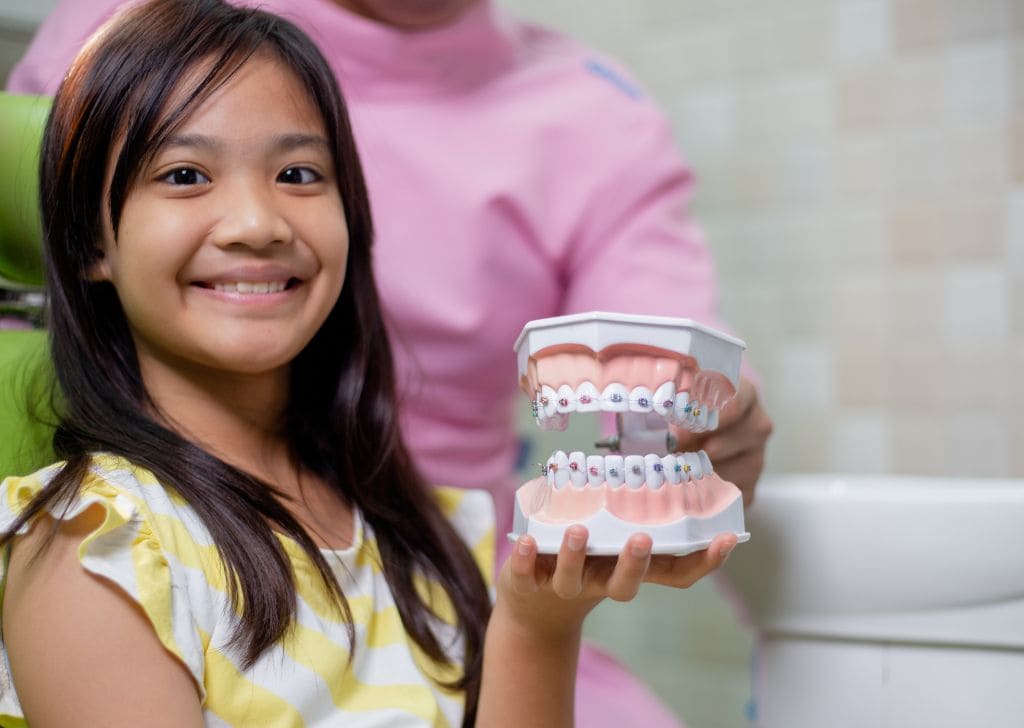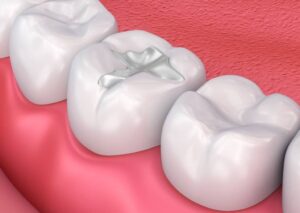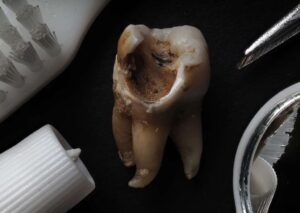As parents, we always want the best for our children’s health – and that includes their smiles. But knowing when it’s the right time to explore braces for kids can feel confusing. If you’re wondering whether your child might need braces soon, these are the signs to look out for.
When Should You Start Thinking About Braces for Kids?
Most dentists and orthodontists recommend having your child’s first orthodontic evaluation around age 7. Even if braces aren’t needed right away, early check-ups help identify jaw alignment issues, bite problems, or crowding before they become more serious.
Why 7? At this age, kids typically have a mix of baby and adult teeth, making it easier to spot potential problems early on. That doesn’t mean braces are slapped on immediately – but it helps dentists monitor the situation and plan for the best time to start.
The 7 Key Signs Your Child Might Need Braces

1. Crooked, Crowded, or Overlapping Teeth
If your child’s teeth seem to be battling for space or coming in at odd angles, it could be time to consider orthodontic help. Crowding can make brushing difficult and lead to cavities later on.
2. Jaw Pain, Clicking, or Irregular Biting Patterns
Complaints about jaw pain, clicking sounds, or difficulty chewing could point to alignment problems. Overbites, underbites, and crossbites can cause long-term wear and tear on teeth.
3. Early, Late, or Irregular Loss of Baby Teeth
Losing baby teeth too early or too late might sound harmless, but it can disrupt how adult teeth come in. If your child’s baby teeth are sticking around or disappearing too fast, an orthodontic check is wise.
4. Thumb Sucking or Mouth Breathing
Habits like thumb sucking or chronic mouth breathing can affect the growth of the jaw and position of teeth. The longer these habits continue, the more likely braces will be needed.
5. Difficulty in Speaking or Pronouncing Words
Speech development can be influenced by the position of teeth. If your child has trouble with certain sounds or slurs their words, misaligned teeth may be the culprit.
6. Frequent Biting of Cheeks or Tongue
If your child is accidentally biting their cheek or tongue often, their teeth may not be lining up properly. A simple fix with braces can save them a lot of discomfort.
7. Low Confidence When Smiling
Sometimes, your child may not say anything but their body language will. Covering their mouth when smiling or avoiding photos can signal they’re self-conscious about their teeth.
Types of Braces for Kids – Which One Is Best?
There are several types of braces for kids-teeth, and choosing the right one depends on your child’s needs, lifestyle, and your dentist’s recommendation. Here’s a breakdown:

Traditional Metal Braces
Traditional metal braces are the most common type of orthodontic treatment. They consist of metal brackets that are bonded to each tooth and connected with an archwire. Small rubber bands (ligatures) are used to hold the wire in place. The braces are periodically adjusted by the dentist to gradually align the teeth.
Pros
- Highly effective for complex cases
- Durable and reliable
- Suitable for kids of all ages
Cons
- Very visible on the teeth
- May cause slight discomfort or soreness after adjustments
Self-Ligating Metal Braces
Self-ligating braces look similar to traditional metal braces but with one key difference: they use a special clip instead of rubber bands to hold the archwire in place. This allows the wire to move more freely and can reduce pressure on the teeth. Installation is similar, with metal brackets bonded to each tooth.
Pros
- No elastic bands needed, reducing friction and making them easier to clean
- Potentially shorter treatment time with fewer adjustment appointments
- Less discomfort due to gentler pressure
Cons
- Still visible like traditional braces
- May cost slightly more depending on the clinic
Clear Braces for Kids
Clear braces are similar to metal braces but use tooth-coloured or clear ceramic brackets to make them less noticeable. They function the same way as traditional braces, with wires and periodic adjustments, but blend better with natural teeth.
Pros
- Aesthetically pleasing for self-conscious teens
- Less noticeable in photos or daily life
Cons
- Brackets can stain without proper care
- Slightly more fragile than metal options
Myobrace (For Younger Children)
Myobrace is a removable appliance designed for younger children to correct poor oral habits and promote natural jaw development. It is usually worn for 1-2 hours a day and overnight while sleeping. Myobrace doesn’t use brackets or wires and is more of a preventive, growth-guidance system than a corrective brace.
Pros
- Non-invasive and removable
- Encourages proper jaw development
- Helps address habits like mouth breathing or thumb sucking
Cons
- Requires consistent daily use to be effective
- Not suitable for correcting moderate to severe alignment issues.
- No elastic bands, easier to clean, can shorten treatment time.
- Still visible, may be slightly more expensive.
Retainer vs Braces – What’s the Difference?
Retainers are typically used after braces to keep teeth in place, but in some mild cases, they can also be used instead of braces to guide teeth gently.
Retainers are ideal for:
- Minor teeth shifting
- Maintaining results after braces
Braces are better for:
- Complex bite issues
- Crowding and overlapping
Your dentist will help you figure out which route makes the most sense for your child’s needs.
Aligners vs Braces – Which is Better For My Kid?
Clear aligners (like Invisalign) are a modern alternative to traditional braces, but they’re not for everyone.
Aligners:
- Removable, comfortable, and nearly invisible
- Best for teens with mild to moderate alignment issues
- Require discipline (must be worn 20-22 hours/day)
Braces:
- Fixed and work continuously
- Better for younger kids or complex orthodontic issues
- No need to worry about losing them or forgetting to wear them
If your child is responsible and looking for a discreet option, aligners might work. But for younger kids or tougher cases, braces are often more reliable.

How to Choose the Best Braces for Kids
Still unsure which is the best braces for kids? The right choice depends on several factors:
- Age and maturity
- Severity of dental issues
- Your child’s lifestyle (e.g., sports, musical instruments)
- Aesthetic preference and confidence
At Dental Home Malaysia, our team will help you make the best decision for your child’s smile through a tailored treatment plan.
Not Sure Yet? Schedule a Consultation With Us
Getting braces for your child is a big decision, but it doesn’t have to be a stressful one. A consultation with our friendly team can help you:
- Identify early signs of orthodontic issues
- Understand your child’s unique needs
- Explore treatment options and timelines
Reach out to Dental Home Malaysia on WhatsApp or book through our website today. We’re here to make dental care easy, gentle, and fun for your little one.
Frequently Asked Questions (FAQ)
How long does the pain last after my kid gets braces?
Mild discomfort or soreness is normal after braces are applied and after adjustments. It usually lasts for 2 to 3 days and can be managed with soft foods and over-the-counter pain relief if needed.
Is there any benefit for my kid to get braces early?
Yes! Early intervention can prevent more serious dental issues later. It helps guide jaw growth, improve bite alignment, and create space for adult teeth to erupt properly.
Will braces change my kid's facial shape?
Braces can subtly enhance facial symmetry by improving jaw alignment and correcting bites. These changes are usually positive, leading to better balance in facial features.
Are there any complications for my kid during the procedure?
Braces are safe, but some kids may experience temporary discomfort, mild irritation to cheeks or lips, or challenges in maintaining oral hygiene. Regular checkups help manage and prevent any issues.
How long does my kid need to keep wearing braces?
Most kids wear braces for 1 to 3 years, depending on the complexity of the case and how well they follow instructions. Retainers are used afterward to maintain results.





